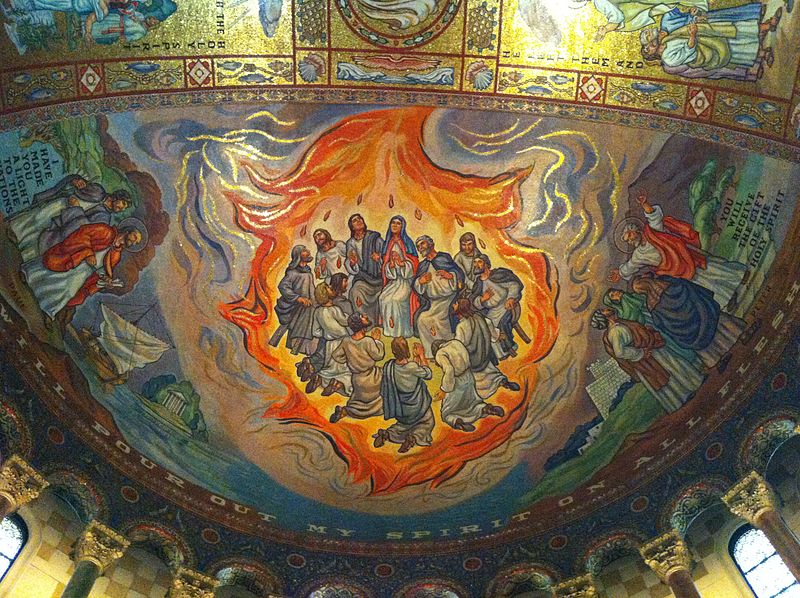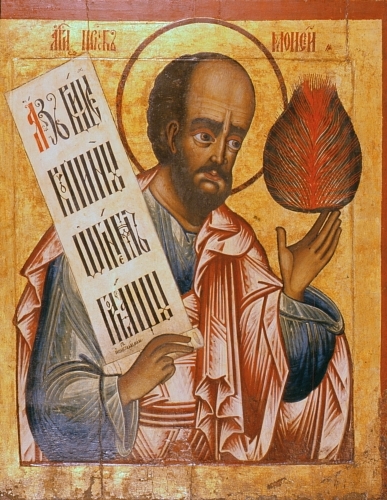A Supernatural History
How People Wrote History When God Was In Control
Myth is defined by having components of the supernatural world. From this jumping off point we see many varieties in myth. My main focus is that of the Judeo-Christian Myths as they affect how the Jews and Christians told history based on the Myths they Believed. Since Jews and Christians believed that God was the supreme creator and master of the universe and therefore history, they wrote with him included in the picture. They were not alone in their theistic view, however they did stand out in their monotheistic view in which they were also convinced that God was ever present, ever powerful, and very much focused on his people and their lives. In addition to their views regarding God, Jews and Early Christians were alive during a time in which the existence of the supernatural was not doubted.

Biblical Historiography
The Bible itself is a History woven tightly with myth. The authors of the biblical texts wrote the history of Israel and the Early Church with the assumption that God was real and that he was working closely in the lives of his people. According to Peter Beitenholz1, the biblical authors were also fueled heavily by apocalypticism. This influence caused them to write biblical history in order to highlight the events that tied in with their end time views. Both the Jews and Early Christians had the end in mind often believing it to be in the near future. This was often due to the suffering of the Jewish people and the desire to believe that the present day was the night before the day.

The Old Testament
The Old Testament records the many nations that ruled over Judah. Historically it gives us information such as who was ruling and which of the ruling powers were lenient towards Jewish practice and religion. It is also rich with the religious myths of the day. The authors inform us that each exile and conquest is a punishment for a nation who has strayed from the true god. Examples of this can be found in the following biblical texts: Daniel, Ezra, 2 Chronicles.
Biblical texts do have debated dates as far as when they were written versus when they claim to be written. Many of these debates relate to the question of the prophets and claims that the prophetic insight provided in such books were really history in disguise. The purpose for something like this would likely be to provide a certain level of credibility to a writers claims regarding other issues (Gorton, 2016).
New Testament
Remaining with biblical texts we can see how the histories were written to demonstrate the deity of Jesus of Nazareth as the Son of God. Stories such as Jesus turning water into wine and healing the sick that are found in New Testament writings use mythical occurrences in order to persuade the audience for which it was written that Jesus was indeed the Messiah. The Gospels all claim to be factual and true histories. These claims combined with the content were intended to convince a populous that very much believed in the supernatural that Jesus was not just a Rabbi with radical view.
The Church Fathers can be considered historians in their own right. While they may not have penned the books of the bible, they decided what was to be considered canon and what was not. They did this by determining the likelihood of a book being inspired by God. While this goal would be considered mythic in nature the method was fairly scientific in a way. They compared texts against what they knew about the teachings of Jesus. If the book or letter didn’t fit what Jesus would have taught, then the book was not included in the Church Canon.
The Medieval Church
One of the later examples of myth in the church can be found in the wide spread creation of Saints(Mortensen). By Recording and venerating the live of holy men, the church was informing who would be remembered in history. When we turn out gaze to Eastern Europe we find another source of the melding of myth and history. If you take a look at the primary chronicle that originates out of Russia, the author includes the ancestry of the Slavic people as far back as to say they were descended from one of the sons of Noah after the flood. This myth blends into a history as the chronicler begins to describe the princedoms of the Rus. The purpose of such a document may have been to support a present (to the author) royal line or simply to unite Slavs under a common history.
Works Cited
Bietenholz, Peter G. 1994. Historia and Fabula : Myths and Legends in Historical Thought from Antiquity to the Modern Age. Brill’s studies in intellectual history, v. 59; Brill’s studies in intellectual history, v. 59. Leiden: Brill
Gorton, Dr. Luke. 2016. “Lecture.” Apocalypse in the Ancient World. Albuqueruqe, NM.
Mortensen, Lars Boje. 2006. The Making of Christian Myths in the Periphery of Latin Christendom (c. 1000-1300). Copenhagen Denmark: Museum Tusculanum Press, University of Copenhagen.
Images Courtesy of Wikipedia Commons.